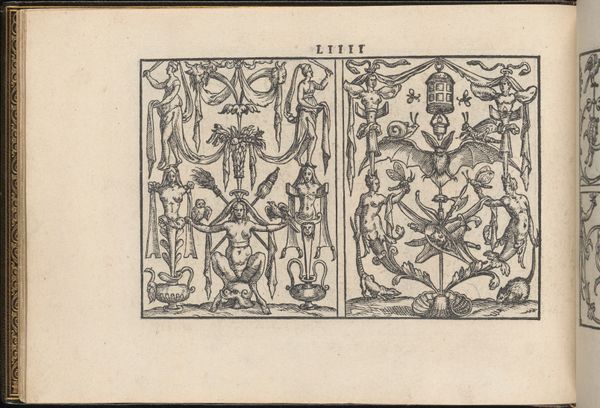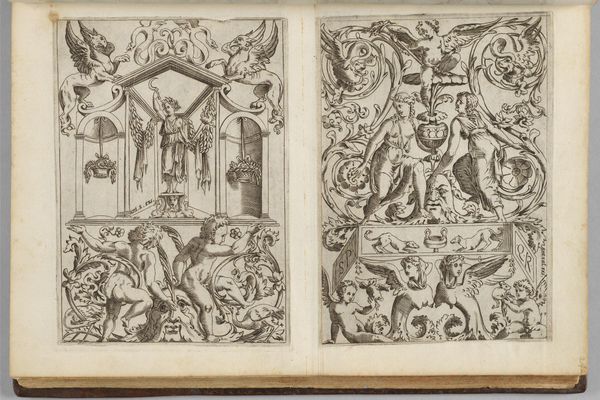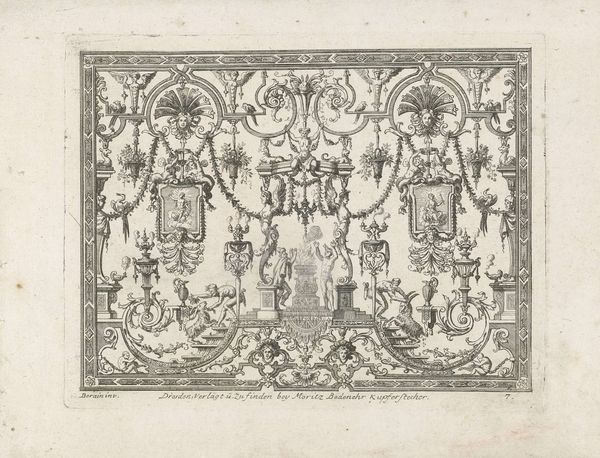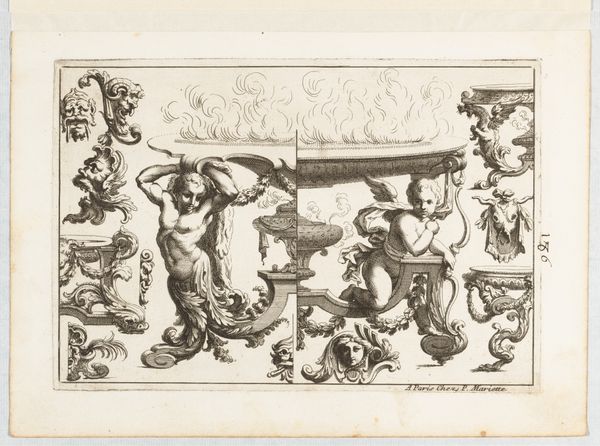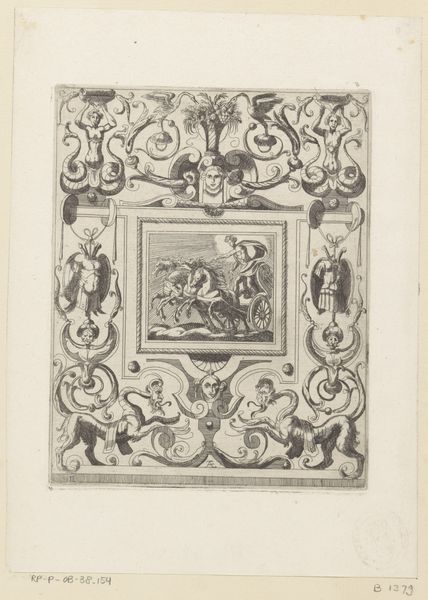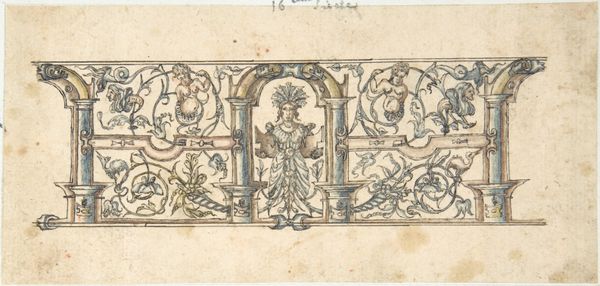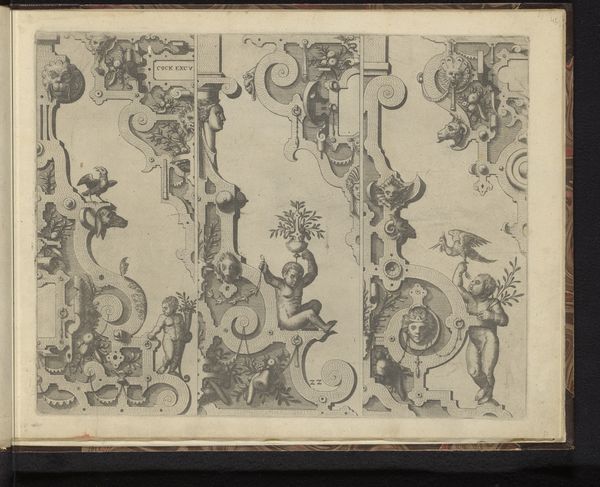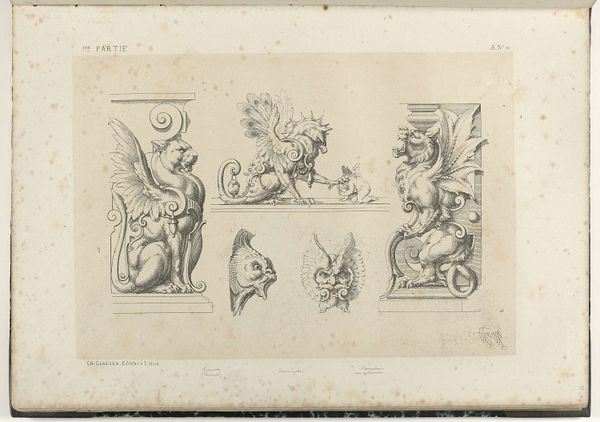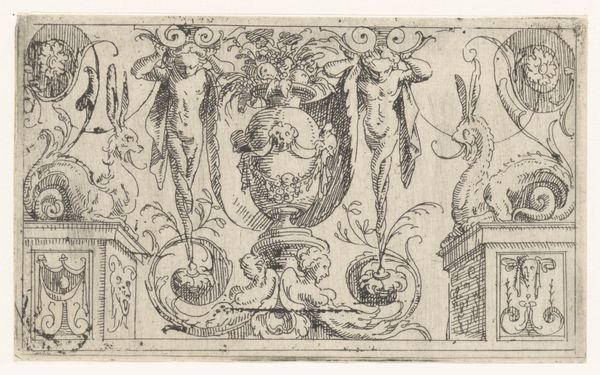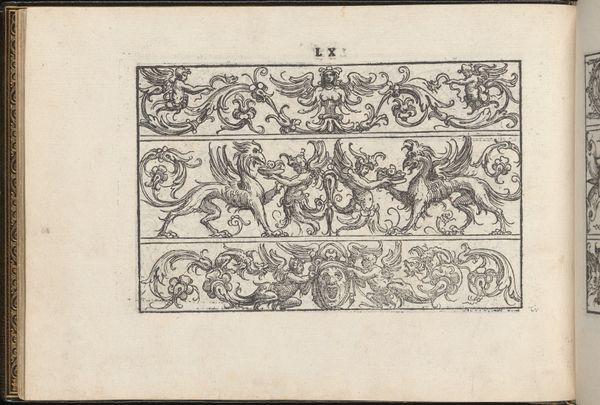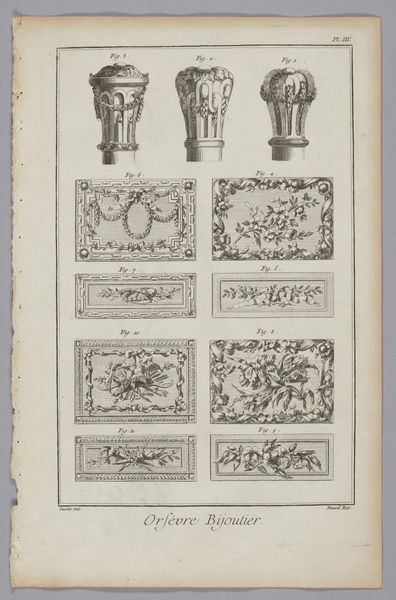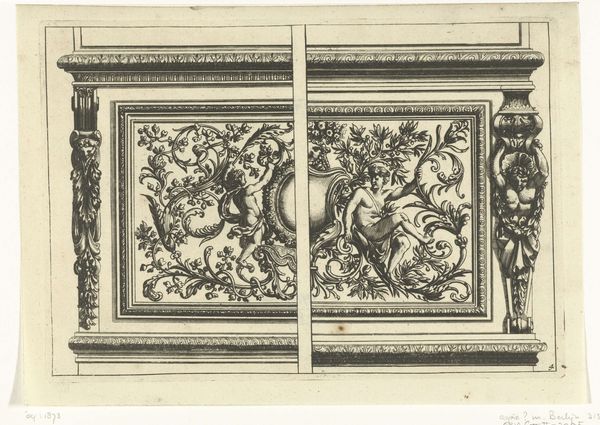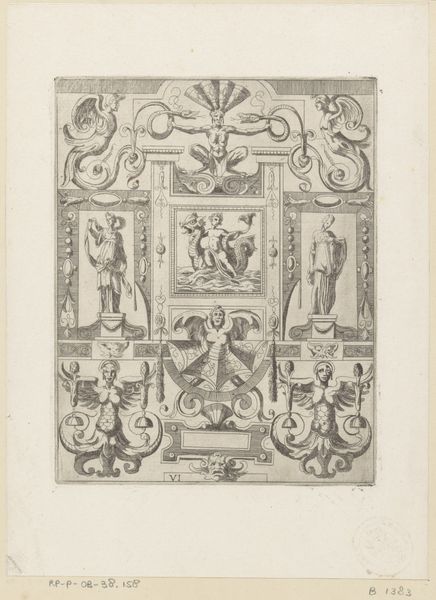
Two Grotesques: the Left with Chimeric Animals and a Siren Above, the Right with a Temple, Diana Within, Adored by Two Kneeling Women c. 1530
0:00
0:00
Dimensions: plate: 20.2 x 14.1 cm (7 15/16 x 5 9/16 in.)
Copyright: CC0 1.0
Curator: Agostino Veneziano's "Two Grotesques," a 16th-century engraving, presents us with twin panels brimming with fantastical ornamentation. What strikes you first about these intricate designs? Editor: The sheer density is captivating! It’s as if the artist wanted to fill every possible space with these curious figures. The contrast between the animalistic and the architectural is particularly interesting. Curator: The grotesque style, popular during the Renaissance, often mixed human, animal, and plant forms, drawing on ancient Roman decorations. Notice how the chimera and sirens evoke a sense of transformation and fluidity. Editor: Right, the image on the right with Diana being adored, feels more structured, more about power and ritual, placed within a temple. This speaks to the social function of art in reinforcing religious beliefs. Curator: Precisely. These weren't just decorative elements; they carried symbolic weight, reflecting cultural anxieties and aspirations. The monstrous and the divine were often intertwined. Editor: Seeing these panels side by side, one gets a sense of how artists and society viewed the relationship between humans, the natural world, and the spiritual realm. It's quite telling, really. Curator: Indeed. Veneziano’s work offers a fascinating glimpse into the visual language of his time, a world brimming with complex symbolic associations. Editor: It's a potent reminder that art is never created in a vacuum, always reflecting and shaping the society that produces it.
Comments
No comments
Be the first to comment and join the conversation on the ultimate creative platform.
